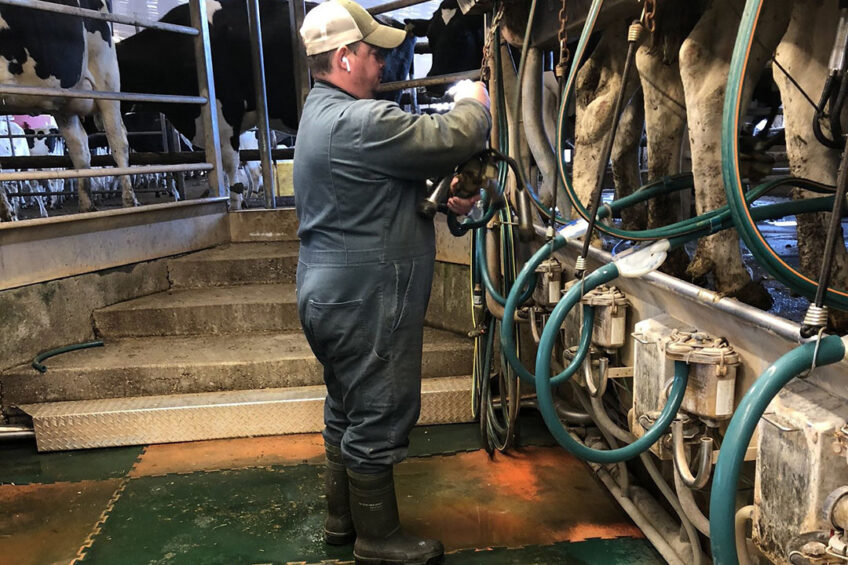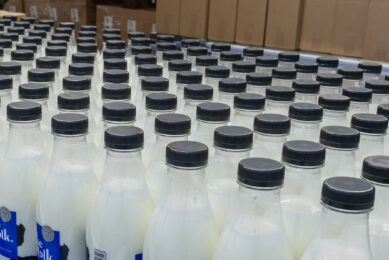Canada’s dairy industry responds to milk dumping

Dairy Farmers of Ontario, the marketing organization and regulatory body representing over 4,000 dairy farmers in Ontario, Canada, advised farmers last week that milk dumping would begin, in rotation, as of Friday.
While the call is unprecedented, it is understandable. The industry has been struggling to adjust to fluctuating demand sparked by COVID-19 and social distancing requirements.
In a letter dated March 31, Dairy Farmers of Ontario stated changing demands, an excess of cream, and an oversupply of milk at the processes led to the call.

Farmer compensation
Farmers who dump milk will be compensated, and all producers were asked to continue as if their milk would be marketed. In the meantime, drivers will continue to visit farms, testing milk for safety and quality.
Ontario isn’t the only province affected by changes in market demand. In a joint statement, Dairy Farmers of Canada and Dairy Processors Association of Canada stated dramatic changes in demand were being felt throughout the supply chain, which have resulted in the need for the disposal of some raw milk. They called the necessary move ‘extremely unfortunate and difficult.’
“A cow produces a certain amount of milk per day and farmers must continue to milk them to keep them comfortable and well,” the statement read. “At the same time we need to ensure production is maintained, as consumers shift their purchases of dairy products to retail stores in greater numbers during the pandemic.”
Dumped amount
When Kevin Bryan, a Dufferin County dairy farmer, got the call last week, he took to Twitter. “Well, just got the call. No milk pick up Friday,” it read. Bryan dumped 3,500 L of milk from 60 cows into dumped in the manure tank on Friday. In his 22 years of full-time farming, he had never been asked to dump milk before. While he was concerned about the waste, he was reassured by the fact that he would still get paid. Farmers who are shipping will be paid less in order to compensate for those who are dumping, he said.
Well, just got the call. No milk pick up Friday! #COVIDー19
— Kevin Bryan (@Milk_the_cow4) April 1, 2020
Bryan wasn’t the only one to get the call. Catherine Agar, who milks 150 cows near Woodstock, Ontario, also got the call. She said the letter she received said a change in demand due to school, business and restaurant closures, had created the shift in demand. But she wasn’t sure where the bottleneck was, but noted that changing demands would put a strain on Canada’s massive supply chain.
“We’re just not set up that way,” she said, referring to the shift in demands. Like most countries, Canada uses a just-in-time inventory strategy that’s aimed at increasing efficiency and lowering waste.
New Hamburg, Ontario dairy farmer and cheese maker Adam van Bergeijk recalls just two other times when farmers were asked to dump milk. Both times occurred in the Netherlands before he emigrated to Canada. He said he was asked to dump milk when a radioactive cloud passed west of Rotterdam. That was sometime in the last 80s, he said. The second time was due to dioxin contamination.
Van Bergeijk has not been asked to dump milk yet, but he sympathizes with farmers who did get the call. “It’s not a good feeling,” he said.
Extraordinary measures
Cheryl Smith, CEO of Dairy Farmers of Ontario, said disposing of milk is an extraordinary measure, and one that the organisation has only ever considered in emergency situations.
“Yet, this week, we informed producers that these measures would be necessary on a select and rotating basis,” she said.
“Ontario producers continue to do their part to nourish Canadians with high-quality milk, and we are working very closely with processors and industry groups to respond to the unpredictable market fluctuations that are now part of our current environment,” she continued. “While we aim to be agile in dealing with these circumstances, we must also look ahead to the medium and long term where we expect demand to normalize. The steps we take now are vitally important to the continued strength of our food supply chain and we are proceeding with that important goal in mind.”
Consumers confused
At the retail level, though, consumers are confused by the announcement. For one, butter prices have dropped considerably. A 454 g package of salted butter usually goes for over $ 7 in Canada. Prices at some retailers for the same butter dropped as low as $ 2.97.
Two weeks ago, many major retailers started limiting purchases to two units of fluid milk products. While this might not be a problem for some, it is for others.
Ontario-based consumer Tracey Court and her family are struggling with the restrictions. She and her husband Bruce and their six children live on a cash crop farm near Tilsonburg where Court says they go through a minimum of 2L of milk each day. Restrictions at the retail level have her visiting several stores, several times each week.
“And we’re told to limit the number of trips out of the home to one per week,” she said.
Court said she was surprised to hear that dairy farmers were being asked to dump milk. “Obviously there’s enough milk in the province,” she said.
Dairy farmer Agar echoes Court’s worry. “We’re concerned that people can’t get what they need,” she said. “We don’t want them going to the store more than once a week.”
In the joint statement by Dairy Farmers of Canada and Dairy Processors Association of Canada, the two organizations reassured producers and consumers that they were doing all they could to address the challenges.
“The entire supply chain is working diligently to react to these sudden shocks and to adjust to changes in demand for dairy and other foods,” it read.
Join 13,000+ subscribers
Subscribe to our newsletter to stay updated about all the need-to-know content in the dairy sector, two times a week.










